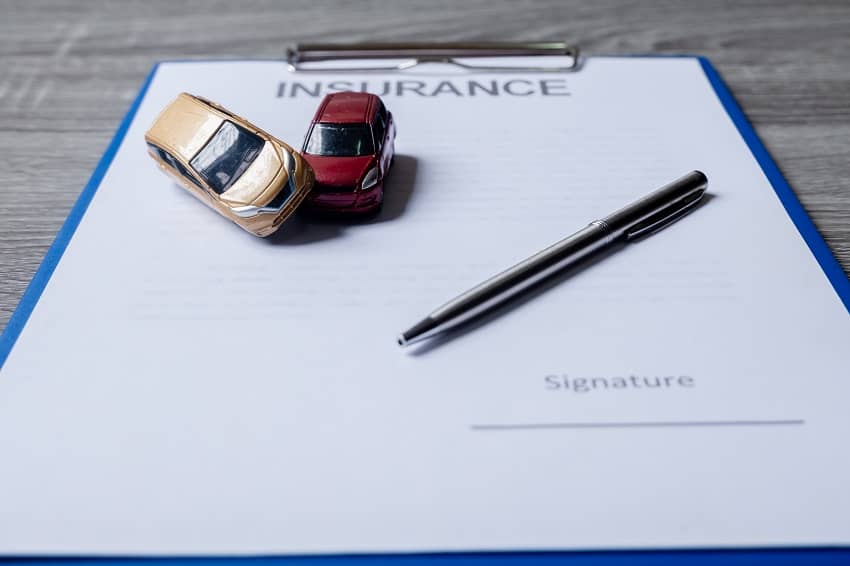A deductible in car insurance is the amount you pay out of pocket before the insurance company covers the remaining cost of a claim. Deductibles can be set at different amounts and vary based on the policy.
Car insurance is an essential expense for all car owners, no matter how safe you are on the road. The risk of getting into an accident is always present, and having the right insurance coverage can help you be financially prepared.
Understanding how car insurance works can be challenging, especially when it comes to deductibles. Simply put, a deductible is the amount you must pay out of pocket before your insurance provider covers the remaining expenses of a claim. It is an important factor to consider when choosing a policy, and selecting the right amount can save you money on your premiums.
Table of Contents
What Is Car Insurance Deductible?
Car insurance deductible is the amount of money you pay before your insurance kicks in to cover the remaining cost of the repair or replacement of your car, in the event of an accident. In simpler terms, it is the amount you pay out of your pocket before your insurance starts to pay for covered damages or losses.
This guide aims to help you understand how car insurance deductible works. Let’s take a closer look at the definition of car insurance deductible, how it works in terms of insurance claims, and the different types of deductibles available.
Definition Of Car Insurance Deductible
Car insurance deductible refers to the amount that you, as the policyholder, are willing to pay out of your pocket in the event of an accident. This amount can be set by the policyholder when purchasing a car insurance policy.
There are typically two types of deductibles that you need to consider when setting your car insurance policy: a per-incident deductible and an annual deductible.
How It Works In Terms Of Insurance Claims
When you make a claim for damages to your car, the insurance company will verify the damage and subtract the deductible amount from the cost of the repair or replacement. The remaining amount will then be covered by your insurance provider.
For example, if your car is damaged in an accident and the cost of repair is $5,000, and you have a $1,000 deductible, you need to pay your insurance provider $1,000, and it will pay the remaining $4,000 to cover your car’s repair or replacement.
Different Types Of Deductibles Available
There are several types of car insurance deductibles you should know about:
- Standard deductible: This is the most common type of deductible offered by car insurance providers. It is usually set at $500 or $1,000.
- High deductible: A high deductible typically ranges from $1,500 to $2,500. By taking on a higher deductible, your monthly premiums will be lower, but you’ll pay more out of pocket if you get into an accident.
- Percentage deductible: A percentage deductible is based on a percentage of your car’s value instead of a flat rate. For example, if your car is $10,000, and the percentage deductible is 10%, you’ll pay $1,000 if you need to make a claim.
- Zero deductible: Some insurance providers offer a zero deductible policy. This means that you won’t have to pay anything out of your pocket when making a claim. This type of policy usually has higher monthly premiums.
Car insurance deductible is the amount you pay out of your pocket before your insurance starts to pay for covered damages or losses. It is essential to understand how car insurance deductible works when purchasing a new policy. Choosing the right deductible can help you save money on your monthly premiums while ensuring you have sufficient coverage in the event of an accident.
How Does Car Insurance Deductible Work?
Car insurance is one of those necessities that you cannot avoid once you are a car owner. To get the best car insurance deal, you must understand the different terms and options available, including the deductible. Deductible is a clause in an insurance policy that requires you to pay a certain amount of money before the insurance coverage kicks in.
We shall delve deeper into how the car insurance deductible works and everything you need to know about it.
Explanation Of Deductible Amount
The deductible amount is the amount of money you agree to pay upfront to cover the damages before the insurance company takes on the rest. For instance, if you are involved in an accident that results in $5,000 worth of repairs and your car insurance policy has a $1,000 deductible clause, then you have to pay the $1,000, while the insurance company covers the remaining $4,000.
Example Scenarios
To understand how the deductible amount works, consider the following scenarios:
- Scenario 1: Suppose you are involved in an accident, and the repair cost is $1,200, while your deductible amount is $500. Then you are responsible for paying the $500, while your insurance covers the balance of $700.
- Scenario 2: Let’s assume you collide with another car, causing $5,000 in damage, while your deductible is $1,000. If you decide to file a claim, the insurance company covers $4,000, while you take care of the remaining $1,000.
- Scenario 3: If your car is stolen, and the cost of replacement is $15,000, while your deductible amount is $2,000. In that case, the insurance company will only cover $13,000, and you are responsible for the initial $2,000.
The Relationship Between Deductible Amount And Premium
Deductibles and premium payments are inversely related; meaning the higher the deductible amount, the lower your insurance premium payment, and vice versa. If you opt for a low deductible amount, your insurance premium payment will be high. Therefore, you need to find a balance between a favorable deductible amount and reasonable premium payments.
In case you are not sure about what option to take, consider how much you can afford to pay upfront in case of an accident or loss.
The deductible amount plays a significant role in car insurance payments. Insurance providers offer different deductible limits based on factors such as your driving history, type and age of the vehicle, among others. Therefore, you should research different options when purchasing car insurance and go through the nitty-gritty details to make an informed decision.
Remember, a higher deductible amount does not always guarantee low insurance premiums, and a lower deductible amount does not always translate to high premium payments. Evaluate your circumstances and choose a deductible amount that works for you.
Types Of Car Insurance Coverage
Car insurance coverage can protect you financially in the event of an accident or other vehicle-related damages. The types of coverage you choose can vary based on your needs and budget constraints. In this guide, we will discuss the four primary types of car insurance coverage including liability coverage, personal injury protection (pip), collision coverage, and comprehensive coverage.
Liability Coverage
Liability coverage is mandatory in most states and covers the costs associated with damage done to other people’s property or injuries sustained in an accident. Without liability coverage, you could be held financially responsible for these costs, which could add up to thousands of dollars or more.
Here are some key points to consider when looking at liability coverage:
- Bodily injury liability covers medical expenses, lost wages, and other expenses related to injuries sustained by others in an accident for which you are at fault.
- Property damage liability covers repairs or replacement of property belonging to others that you damage (such as their car, fence, or mailbox).
- Liability coverage limits represent the maximum amount your insurer will pay in the event of a claim. Be sure to choose adequate limits to avoid any financial burden in case of a significant accident.
Personal Injury Protection (Pip)
Personal injury protection (pip) covers medical expenses and lost wages for you and your passengers if you are in an accident, regardless of who was at fault. It can be especially useful if you don’t have good health insurance or if you can’t work for a while after an accident.
Here are some other key points about pip:
- It may also cover expenses related to rehabilitation or funeral costs.
- In some states, pip coverage is mandatory, while in others, it is optional.
Collision Coverage
Collision coverage covers the cost of repairs to your vehicle if you are in an accident, regardless of who was at fault. Here are some other key points to keep in mind:
- Collision coverage is not mandatory in most states, but it can be useful if you have an expensive car that would be costly to repair or replace.
- It does come with a deductible, which means you will have to pay a certain amount out of pocket before your insurance kicks in.
Comprehensive Coverage
Comprehensive coverage covers damages to your vehicle that result from something other than an accident, e. g. , theft, vandalism, or natural disasters. Here are some other things to keep in mind about comprehensive coverage:
- It is not mandatory, but it may be worth considering if you live in an area with a high rate of vandalism or if you own an expensive car that would be expensive to repair.
- As with collision coverage, comprehensive coverage comes with a deductible.
Choosing the right car insurance coverage can be a crucial decision that can help protect you financially in the event of an accident or other damages. Be sure to review your options carefully and choose the coverage that meets your needs while staying within your budget.
How To Choose The Right Deductible?
When it comes to choosing a deductible amount for your car insurance, it’s essential to consider several factors to ensure you make the right decision. With so many options available, the process can be overwhelming, but don’t worry. This section will explain how to choose the right deductible and give you an insight into the pros and cons of varying deductible amounts.
Factors To Consider When Choosing A Deductible Amount:
- Your personal financial situation: The amount you can afford to pay out of pocket in the event of an accident should be the primary consideration when selecting a deductible amount. If you have a robust emergency savings fund and can comfortably pay a higher amount in case of damage, a high deductible may be suitable for you. However, if you are living paycheck-to-paycheck, a low deductible may be a better option.
- The make and model of your car: The cost of repairs for high-end cars is significantly higher than that of standard vehicles. Consequently, the deductible amount should be higher for luxury cars to offset the increased repair cost.
- Your age and driving history: If you’re a new driver or have a history of accidents, you may want to opt for a lower deductible to save money on repairs.
- Location: If you reside in an area where car theft or vandalism is common, it may be wise to choose a lower deductible to avoid substantial out-of-pocket expenses on repairs.
Pros And Cons Of High And Low Deductible Amount:
Low deductible:
- Pros:
- Lower out-of-pocket expenses in case of an accident
- Peace of mind knowing that you don’t have to pay a lot in the event of damage
- Cons:
- Higher monthly premiums
- Over the long-term, the higher premiums may cost more than the savings you get from a low deductible
High deductible:
- Pros:
- Lower monthly premiums
- You save on annual premium payments
- Cons:
- High out-of-pocket expenses if damages occur
- May not be a good option if you cannot afford the high deductible amount
Personal Financial Situation As A Determinant:
Unfortunately, there is no one-size-fits-all when it comes to choosing a deductible amount. It’s essential to evaluate your financial situation and consider the risks before making your decision. As a rule of thumb, you should opt for a higher deductible if you have enough savings to pay the extra amount in the event of damages.
On the other hand, if you’re not confident of being able to cater to the deductible, you should choose a lower amount.
Choosing the right deductible amount for your car insurance is crucial to ensure financial security. We suggest considering your personal financial situation, the make and model of your vehicle, driving history, and location to make an informed decision that fits your individual situation.
Frequently Asked Questions
Car insurance can feel like a daunting topic to navigate, with many terms and concepts that may not be immediately familiar. One such term is deductible, which refers to the amount of money a policyholder is responsible for paying before their insurance provider covers the rest of the cost of a claim.
We’ll explore some frequently asked questions about deductible in car insurance to help you better understand how it works.
What Happens When A Deductible Is Met?
When a policyholder files a claim and their insurance company determines that their deductible applies, the policyholder must pay that amount out of pocket before the insurance company pays the rest. For example, if a policy has a $500 deductible and the policyholder files a claim for $1,000, they would pay $500 while their insurance company would cover the remaining $500.
Once the deductible is met, the policyholder is typically only responsible for paying their share of the cost, which could be a copay or a percentage of the total cost depending on their policy.
Can A Car Insurance Company Waive Deductible?
While car insurance companies generally require policyholders to pay their deductible, there are some scenarios in which a deductible can be waived. One such scenario is when the policyholder and the person responsible for the accident have the same insurance company.
In this case, the company may waive the deductible to simplify the claims process. Another scenario is when the policyholder is not at fault for the accident and is able to obtain reimbursement from the at-fault driver’s insurance company. However, it’s important to note that if a deductible is waived, it may still impact the policyholder’s premium at renewal.
How To Lower Your Deductible?
If you’re interested in lowering your car insurance deductible, there are a few things to consider. One option is to simply raise your premium, which may allow you to choose a lower deductible. However, this may not always be practical or cost-effective.
Another option is to look for a policy with a diminishing deductible, which reduces your deductible over time as you maintain a safe driving record. Finally, you may be able to lower your deductible by bundling your car insurance with other policies, such as home or renters insurance, or by taking advantage of discounts for safe driving or other factors.
Understanding how deductible works in car insurance is an important part of being an informed policyholder. By knowing how your deductible works, what happens when it is met, when it can be waived, and how to lower it, you can make smarter decisions about your coverage and be better prepared if you need to file a claim.
Frequently Asked Questions For What Is Deductible In Car Insurance
What Is A Car Insurance Deductible?
A car insurance deductible is the amount you pay out of your pocket before your insurance company pays for damages in case of an accident.
How Does A Car Insurance Deductible Work?
When you file a claim, the cost of damages is first subtracted from your deductible, and then your insurance company pays the remaining amount.
What Is The Recommended Deductible For Car Insurance?
The recommended deductible for car insurance varies but it is usually advisable to choose a deductible amount that you can afford to pay in case of an accident. It’s often a balance between your budget and the desire to save on premiums.
Can I Choose My Car Insurance Deductible Amount?
Yes, you can choose your car insurance deductible amount. The amount you choose will affect the cost of your premiums. Higher deductibles result in lower premiums, but you need to be able to afford the deductible amount in case of an accident.
Is Deductibles Same As Premiums In Car Insurance?
No, deductibles and premiums are not the same in car insurance. A deductible is the amount paid by the policyholder in case of an accident before the insurance company pays the remaining amount. Premiums, on the other hand, are the amount paid to an insurance company for coverage of a specific period.
Conclusion
Ultimately, understanding your car insurance deductible is crucial to ensuring you have the coverage you need in the event of an accident. By taking the time to choose the right deductible for your personal situation and budget, you can ensure that you are protected financially if you are involved in a collision.
Remember that a higher deductible could mean lower premiums, but it also means you’ll pay more out-of-pocket if you do have to file a claim. No matter which deductible you choose, make sure you fully understand your policy and what it covers.
Additionally, be sure to compare insurance quotes regularly to ensure you’re getting the best deal, as rates can vary widely between providers. Keep these tips in mind, and you can enjoy the peace of mind that comes with having the right car insurance coverage.





